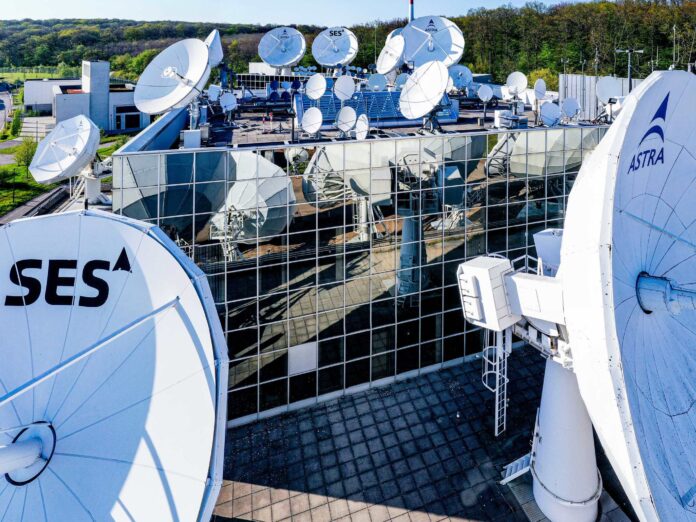SES touts the creation of a ‘global multi-orbit connectivity powerhouse’ and plans to explore IoT, D2D
It’s a big couple of weeks for telecom and tech-related acquisitions, from the T-Mobile US/UScellular transaction getting the go-ahead from the Federal Communications Commission, to the rapid wrap-up of the Synopsys/Ansys merger and now, SES finalizing its $3.1 billion purchase of Intelsat.
The combined company now has a fleet of 120 satellites across two orbits, with 90 geostationary (GEO) satellites and nearly 30 medium earth orbit (MEO) satellites, plus “strategic access” to low earth orbit (LEO) satellites. It also has an extensive ground network and approximately 60% of its revenues are in high-growth segments, according to a release.
The company’s statements on the transaction close reflected optimism about having both a stronger financial footing and a strategy of “disciplined investment in future growth.”
SES and Intelsat were roughly the same size in terms of revenues, with SES earning $2.2 billion in revenues during its fiscal 2024, and Intelsat earning $2 billion in revenues during the same fiscal year. The combined company outlined an expected with annual capital expenditures averaging €600–€650 million (about $696-$754 million) for the next three years, excluding the European IRIS2 satellite program.
“This will enable the company to continuously strengthen its network and explore emerging growth markets including Internet of Things (IoT), direct-to-device communications, inter-satellite data relay, space situational awareness, and quantum key distribution,” SES said.
“In this new chapter, we are bringing together a powerful mix of talented people, network infrastructure, spectrum, innovation, and global relationships that will allow us to deliver next-generation connectivity and space-enabled services in smarter and quicker ways,” said SES CEO Adel Al-Saleh in a statement. He went on to add: “Our focus is clear: to grow, to lead in high-potential markets, and to shape the future of our industry. This is a long-term play, and we are building with the future in mind — growing year after year, expanding our capabilities, and creating lasting value for our customers and shareholders alike.”
Creating a stronger traditional satellite player was among the reasons cited by the Federal Communications Commission for approving the transaction. The FCC’s order on the SES/Intelsat merger encapsulated the competitive pressures facing non-LEO satellite players: With the proliferation of terrestrial fiber networks and streaming rather than linear broadcasting, their content distribution services are seeing less demand and declining revenues. Meanwhile, they are also being squeezed by faster, higher-capacity LEO players like Starlink and the looming emergence of Amazon’s Kuiper.

SES had argued to the FCC that the merger would mean an optimized multi-orbit network and would free up more of their financial resources to invest in new network capacity, technology and services. Direct-to-device services is among the potential areas for new investment. In March of this year, SES struck a strategic deal with Lynk Global to provide funding for Lynk’s D2D constellation and become a channel partner to sell D2D services to government customers in particular.
The FCC accepted the companies’ argument that the SES/Intelsat combination will enable them to more aggressively compete against Starlink and other LEO providers. Meanwhile, the agency also found that there was unlikely to be competitive harm to markets like in-flight connectivity services, cellular backhaul and government services because of the likelihood that LEO providers will ultimately capture much of the business in those sectors and that SES and Intelsat’s “share of total satellite capacity is dwarfed by the capacity of LEO providers.” SES and Intelsat cited numbers that project that LEO operators are expected to account for about 80% of the cellular backhaul and trunking service revenues by 2032.
In terms of the FCC’s now-mandated ability to find and auction new spectrum, including an additional 100 megahertz of C-Band spectrum, the agency also found as part of the transaction review that SES and Intelsat “have substantial excess North American C-band capacity” and noted that “SES has said that it would be possible to reallocate an additional 100 megahertz or more of C-band spectrum.”
SES and Intelsat claim that the transaction will enable them to achieve cost savings of more than $1.6 billion in three years, and the companies highlighted “ground equipment and platforms, network orchestration, seamless integration, and their MEO network as potential investment and innovation targets.”

